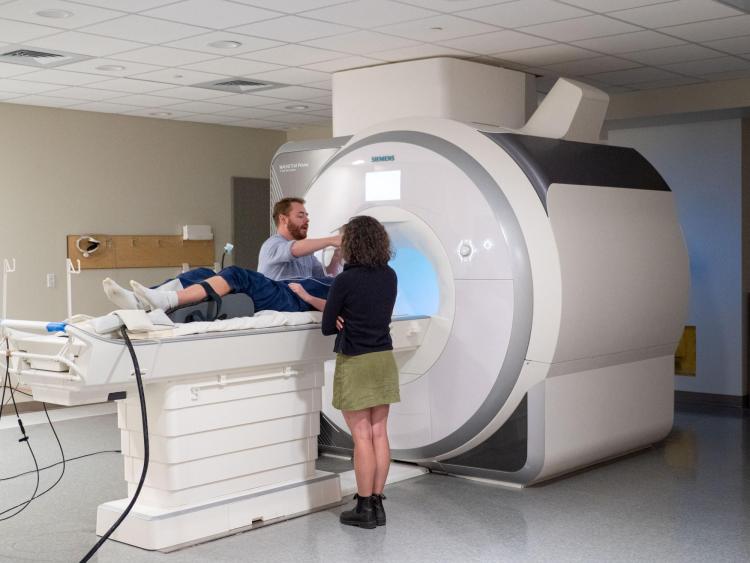$11 million, 7-year NIH grant to help unravel mysteries of the teen brain
How do screen time, drug use, exposure to environmental toxins or concussions impact the development of an adolescent’s brain? What role do genes play in influencing its size, structure and function? Why, neurologically speaking, do teenagers do the crazy things they do?
These are among the previously unanswerable questions CU Boulder researchers hope to help unravel with a new seven-year, $11 million grant renewal from the National Institutes of Health. The funding supports the continuation of the landmark Adolescent Brain Cognitive Development (ABCD) study, launched in 2015 as the largest long-term study of brain development and child health ever conducted in the United States.
“The next phase of the study is really exciting, because now that we have the baseline data on these kids, we can see what changes occur during the chaos of the teenage years,” said Marie Banich, a professor of psychology and neuroscience at CU Boulder and co-principal investigator.
“It’s like watching a time-lapse movie of the brains of thousands of kids developing over time. The sheer scope and richness of the data we are collecting is incredible.”
The 21-site study is following 11,750 youth, including 565 at CU Boulder’s test site, from age 9 or 10 into their early 20s—the time when most brain development is complete.
[video:www.youtube.com/embed/_XgK9htNlNI]
The researchers use functional magnetic resonance imaging (fMRI) to scan participants’ brains every two years. Meanwhile, they are also amassing tens of thousands of other data points via detailed annual interviews and behavioral assessments; physiological and cognitive tests; and a collection of bio-specimens, from blood and saliva to baby teeth. (Imaging was halted due to the coronavirus pandemic but is expected to resume later this summer. Other data collection has continued remotely.)
CU is one of only four sites studying twins, with 240 twin sets—half of them identical, half fraternal—included in its sample.
“Studying twins gives us the ability to determine how strongly genes influence behaviors, brain structure and function, and how genes and environments interact to influence the brain overtime,” said co-principal investigator John Hewitt, director of the Institute for Behavioral Genetics (IBG). “We couldn’t be more thankful to the families who have agreed to participate.”
A $440 million investment
In its recent grant renewal, the NIH awarded nearly $290 million across all sites, bringing its total investment in the project to $440 million.
“The investment NIH has put into this is unparalleled. There’s nothing like it,” Hewitt said.
The project is indicative of a new era of open access research, with all data shared freely every six months for scientists around the globe to answer their own scientific questions. Thus far, 32 studies have been published with the two early datasets released so far.
One study, published in January in Nature Medicine, found that children from low-income families may be more vulnerable to the neurotoxic effects of lead exposure than their more affluent peers. Another soon-to-be-published paper by CU Boulder graduate student Evan Winiger explores the relationship between prenatal cannabis exposure and childhood sleep problems.
But the project will likely reap thousands of papers in the coming years.
Among the outcomes, the researchers hope to walk away with a much clearer look at how use of substances like nicotine, alcohol and marijuana shape brain development at various doses and different time points.
“Kids experiment with things. That is part of what the teen years are about,” said Banich. “We’d like to know how much is too much and when is the most sensitive time for their negative effects.”
Other studies will explore the impact of contact sports, screen time, exercise and psychological stress on the brain at different stages.

Brain imaging at the Intermountain Neuroimaging Consortium facility on campus. (Credit: CU Boulder)
Because one teenager can be vastly different than another developmentally, Banich also envisions the data being used someday to develop a “brain age” metric, which could be used by clinicians in place of a chronological age to offer developmentally-appropriate advice.
The imaging was paused temporarily due to the coronavirus pandemic, but the researchers hope to resume later this summer. Meanwhile, they've continued other data collection remotely and revised their surveys to address another question: How does living through a global pandemic impact health and development?
With decades in their respective fields, Banich and Hewitt say the project marks the pinnacle of their careers.
“I have never been involved in anything like this,” said Banich. “To be part of a study where 150 major researchers at 21 institutions are all rowing in the same direction is truly an amazing scientific experience.”


